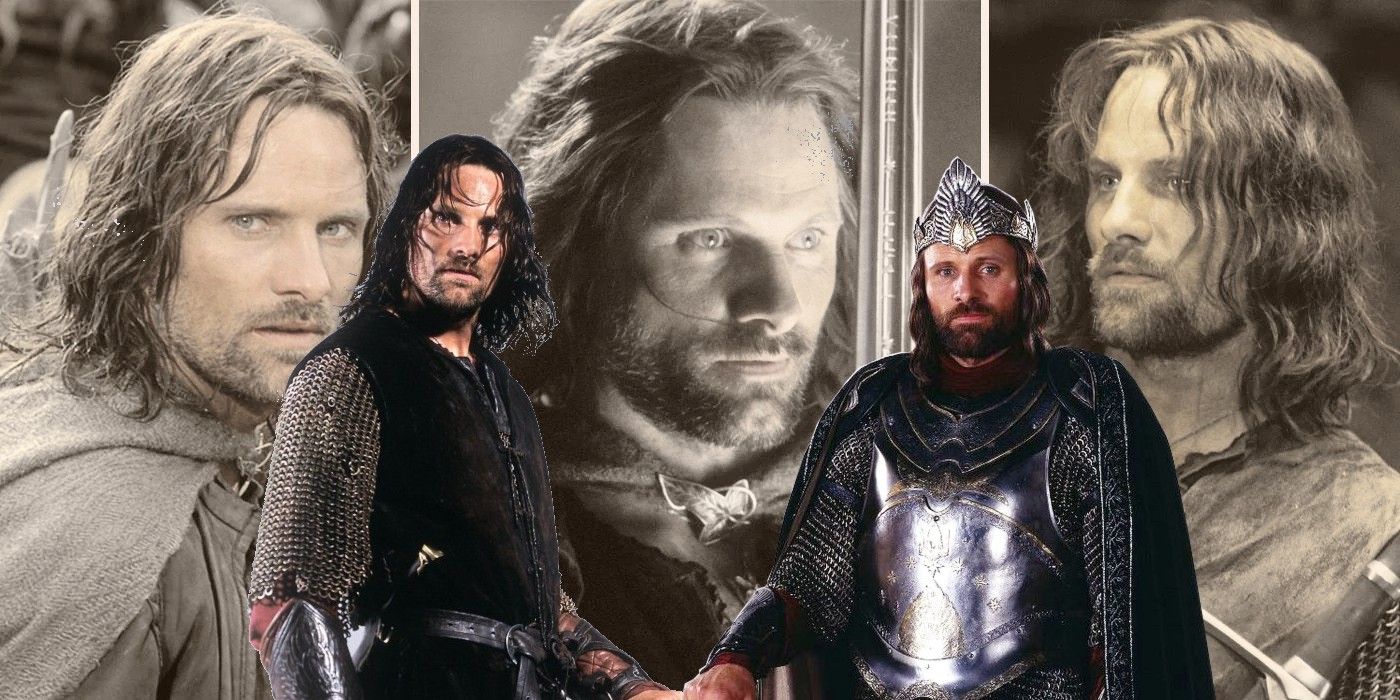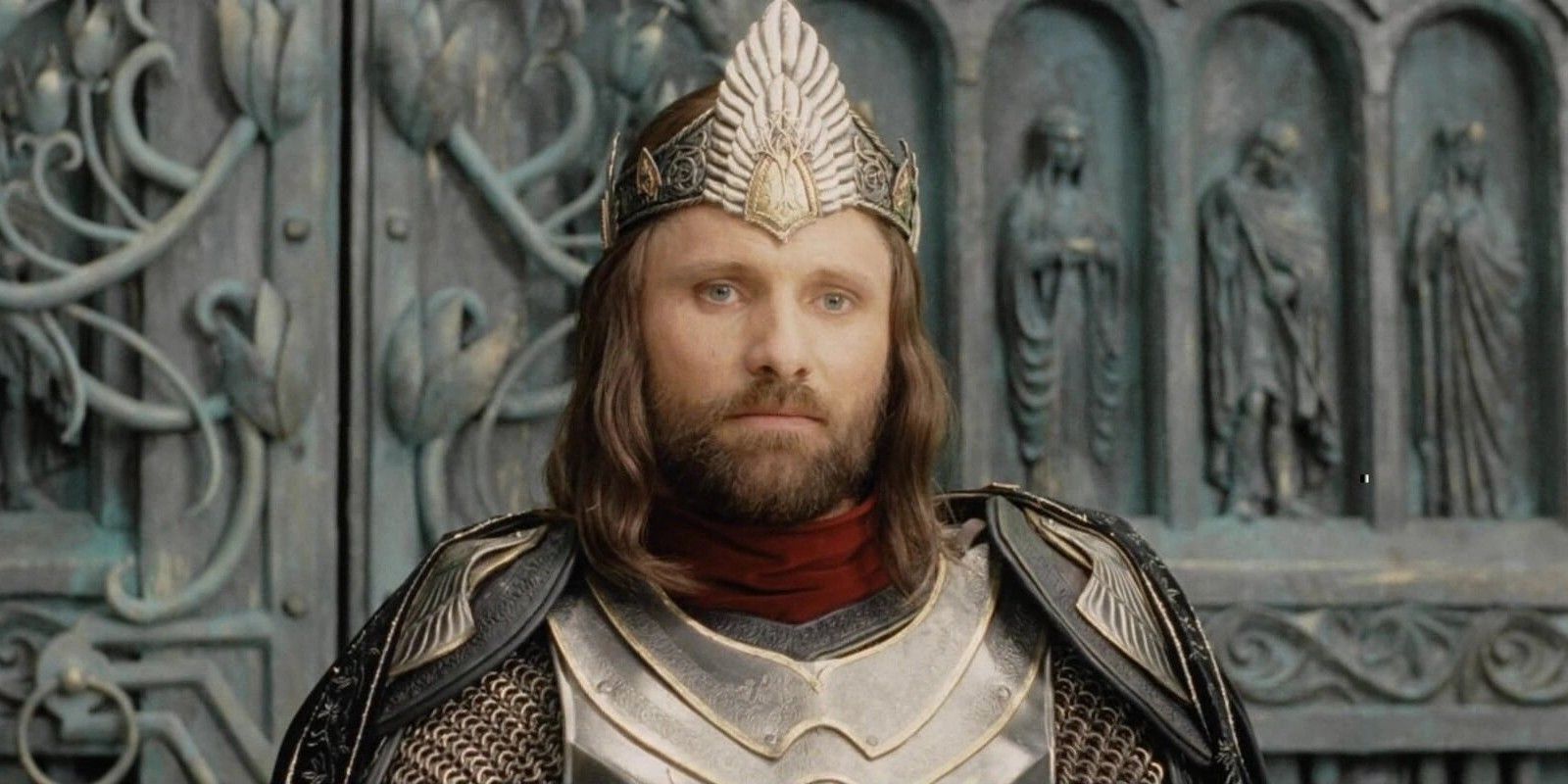Throughout The Lord of the Rings, Aragorn went by many different names. This is because of his important lineage and also because of the expansive history behind J.R.R. Tolkien’s writings. In Tolkien's work, names always mean something that describes their owner. As such, the names that Aragorn used at various points in his life each represented the status in Middle-earth that he accepted at the time.
Aragorn II, son of Arathorn II, was a Dúnedain – a descendant of the Númenoreans – and the rightful king of men. Once favored by the Valar, the Númenoreans were strong and powerful, but after the corruption of Sauron, their island was sunk into the sea. Only a remnant survived and fled to Middle-earth where they founded two kingdoms in exile: Arnor and Gondor. After Isildur’s death, there was infighting and strife; Arnor divided and fell to the Witch King of Angmar, and its people were scattered, becoming Rangers of the North. Many forgot their ancient heritage; however, the elves at Imladris preserved the line of Isildur. It was there that Aragorn was raised in secret until he was ready to claim the throne.
Aragron was raised as Estel, the Sindarin word for hope, because of the confidence that the elves had for his future. Aragorn, however, was not always willing to accept his role as a king. That is why he was first introduced in Bree as Strider. That name was indistinct and shunned his heritage. In Peter Jackson’s The Fellowship of the Ring when Gandalf spoke of Aragorn’s potential as a king, Elrond responded with spite that “he turned from that path long ago.” Rather than uniting men under his banner, he was only a Ranger fighting to protect the Shire and the surrounding areas from the evils of the North. He wanted to fight against evil, but he refused to lead.
Aragorn means “Revered King,” a fact first mentioned by Legolas, who proclaimed Strider’s real status as heir to the kings of the Númenor when the Fellowship was formed in Rivendell. Even then, Aragorn was hesitant to fully accept his role, but the confidence that Gandalf and the rest of the Fellowship showed in him throughout their time together allowed him to believe in himself more and more. As the Fellowship was broken, even Boromir, who was skeptical of Aragorn’s status at first, proclaimed his allegiance with his dying breath.
By the end of the book series, Aragorn, the Heir of Isildur, became king. In doing so, he finally adopted the title of Elessar, which Galadriel had named him in the high-elvish language of Quenya. It translates to mean “Elfstone.” The title references the gift that she and her husband bestowed upon Aragorn when the Fellowship left Lothlórien. Although it was replaced by the “Evenstar” in the movies, the Elessar was an important elvish jewel from long ago. It was a green stone made in Gondolin during the First Age of Middle-earth by either Enerdhil or Celebrimbor and was said to have the light of the sun within it. Whether Galadriel gave him the original or a lesser version is debated, but the significance is not diminished. Her gift represented the elves’ approval of his kingship and foreshadowed his union with Arwen, daughter of Elrond. His taking the name and title of Elessar showed his public acceptance of the role as king of men in Middle-earth, and he ruled many years before his eventual, peaceful death.



